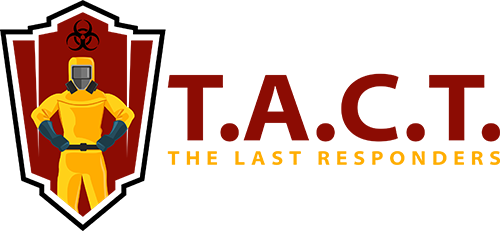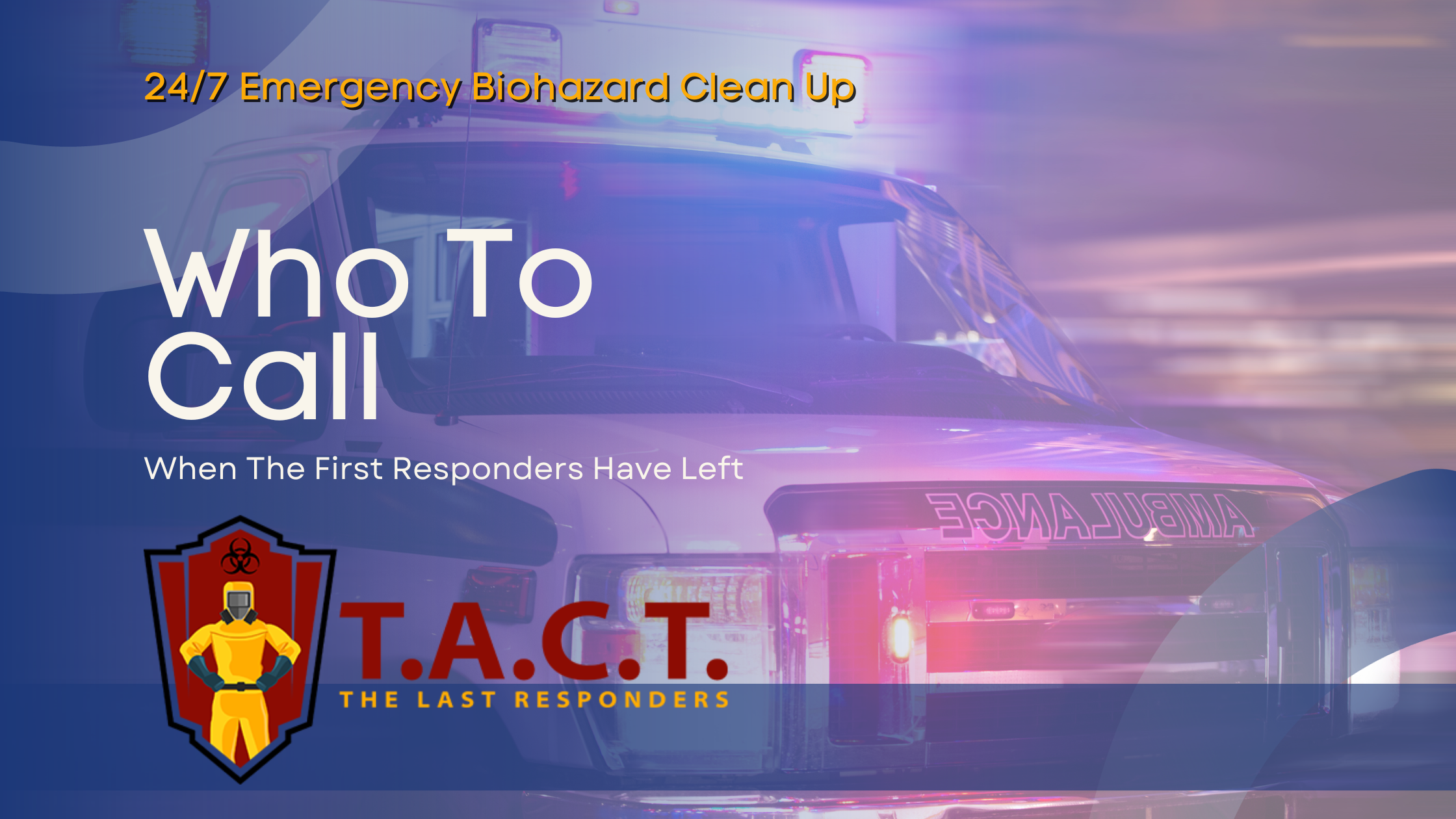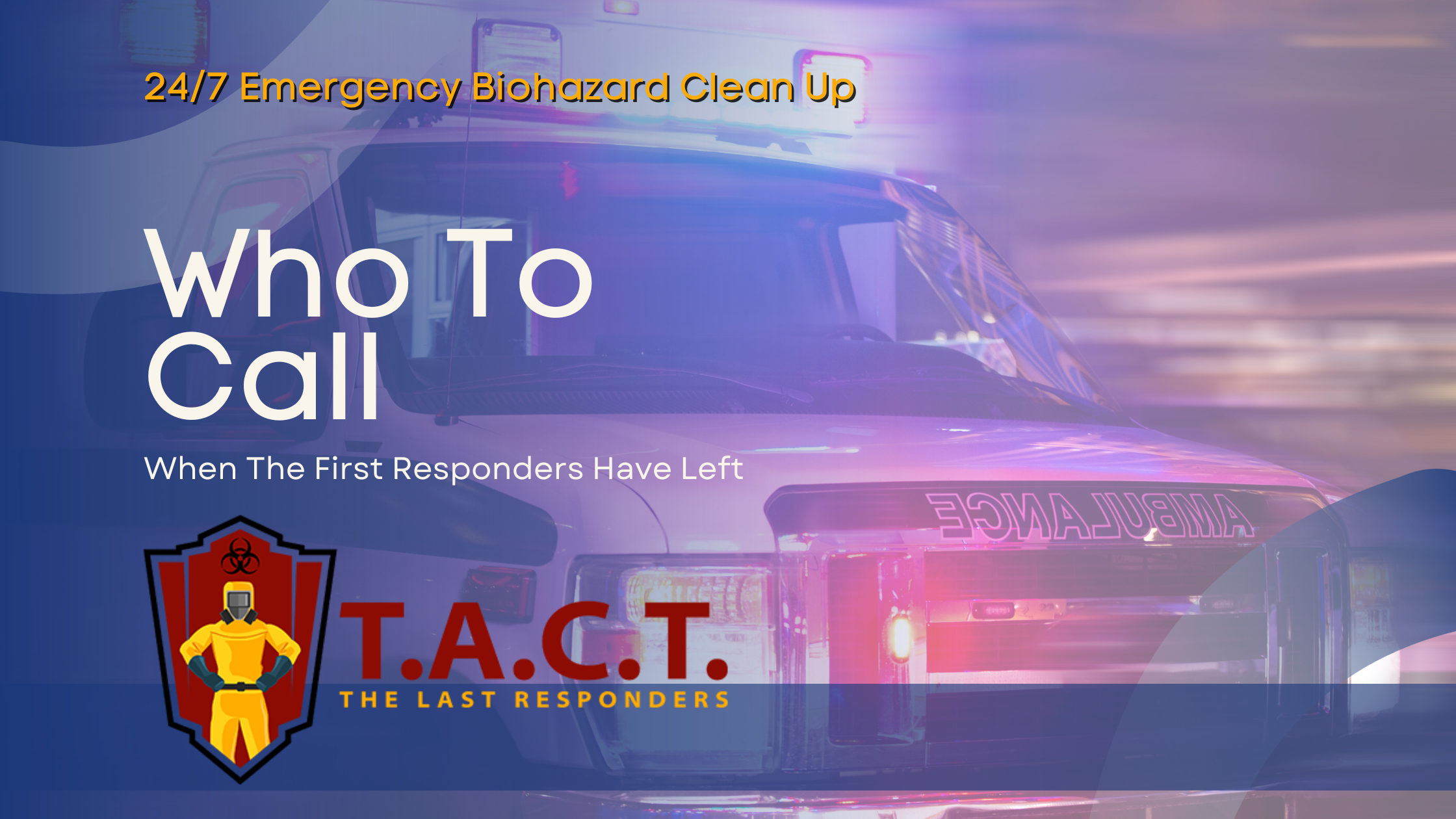Best tips on where to start cleaning a hoarder’s house
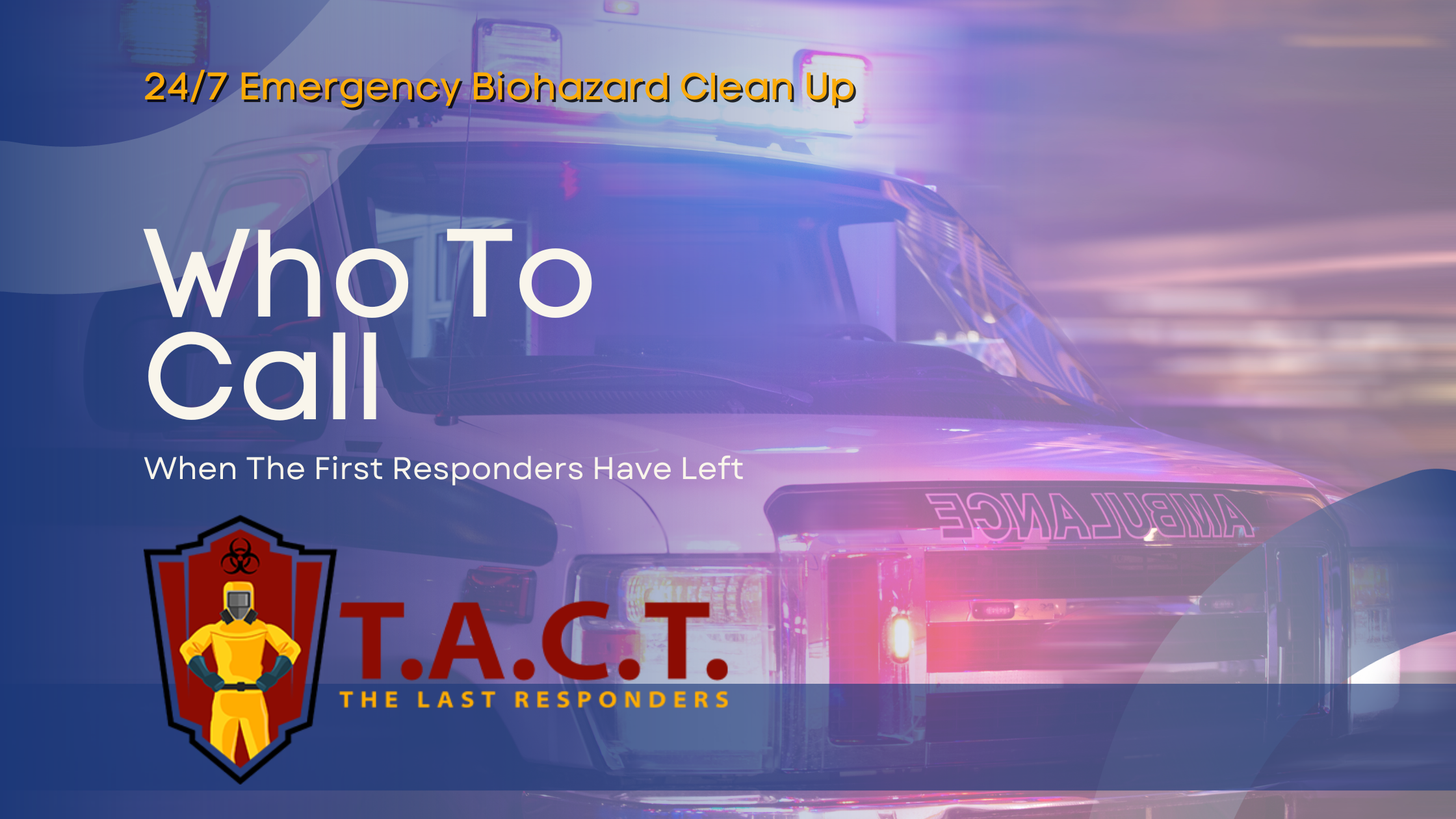
Best Tips on Where to Start Cleaning a Hoarder's House
Cleaning a hoarder’s house is a daunting task, but knowing where to start cleaning a hoarder’s house can make it more manageable. The most important first step is a thorough assessment of the hoarder’s home. This helps you understand the scope of the problem, identify safety concerns, and plan your cleaning strategy effectively. In this guide, we will walk you through each step in detail, from assessing the hoarder’s house to organizing and sanitizing the space.
Key Takeaways
Begin cleaning a hoarder’s house with a thorough assessment to identify safety risks and document the situation for effective planning.
Utilize a systematic sorting process, such as the four boxes system (Keep, Donate, Recycle, Trash), to streamline decision-making and reduce clutter efficiently.
Address emotional challenges by postponing the sorting of sentimental items and encouraging family involvement, while considering professional help when necessary to manage hazardous conditions.
Assess the Hoarder's House
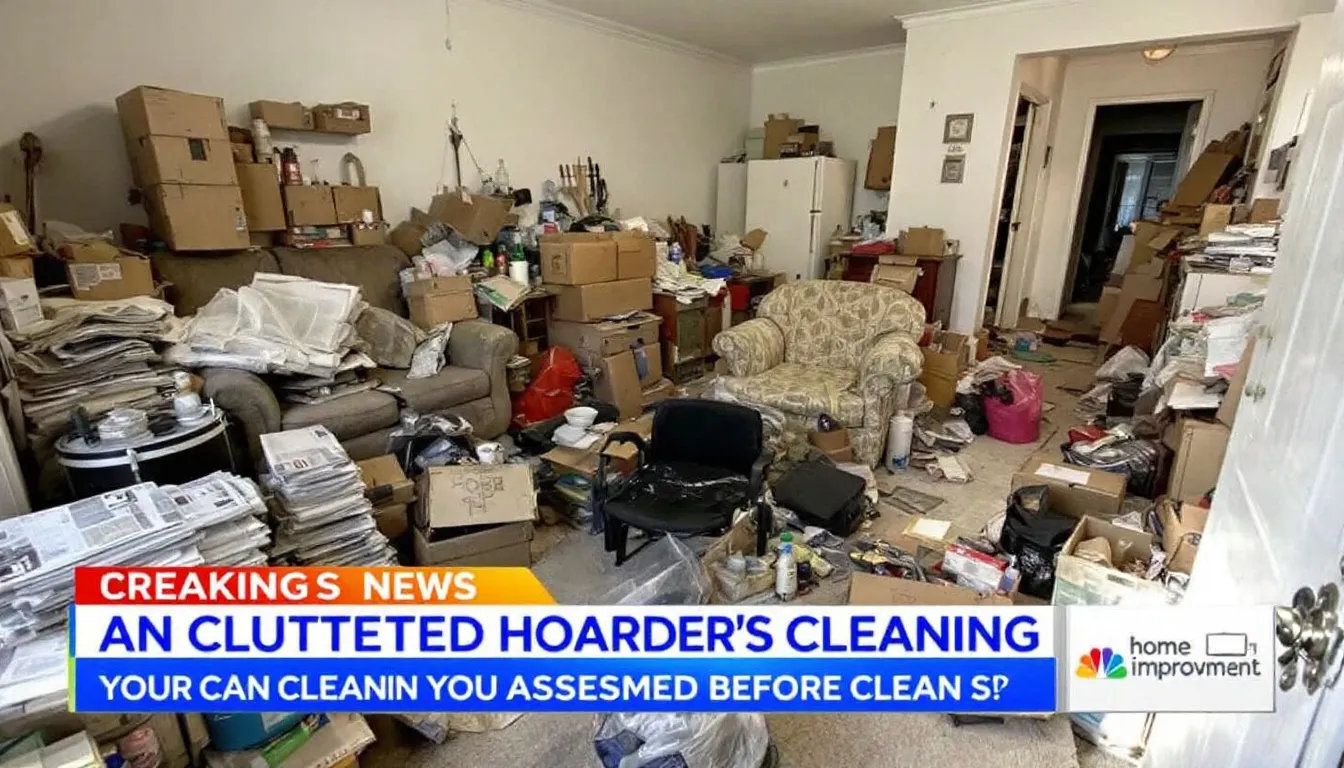
The first step in cleaning a hoarder’s house is a thorough assessment. This isn’t just about taking a quick glance around; it’s about understanding the full scope of the situation and identifying specific risks. Fire hazards, structural issues, and blocked pathways are critical safety concerns that need immediate attention. Without addressing these, the cleaning process can become dangerous.
Tools like the Clutter to Hoarding Scale can help you gauge the severity of the clutter and its impact on daily functioning. Key aspects of this scale include:
It rates the level of hoarding from 1 to 5.
It provides a clear picture of what you’re dealing with.
It helps evaluate how the clutter affects living conditions.
It assists in determining what resources will be needed for the cleanup.
Documenting the assessment with photos helps in tracking progress and planning the cleanup strategy. The more detailed your assessment, the better prepared you’ll be to tackle the hoarder house cleaning effectively.
Gather Essential Cleaning Supplies
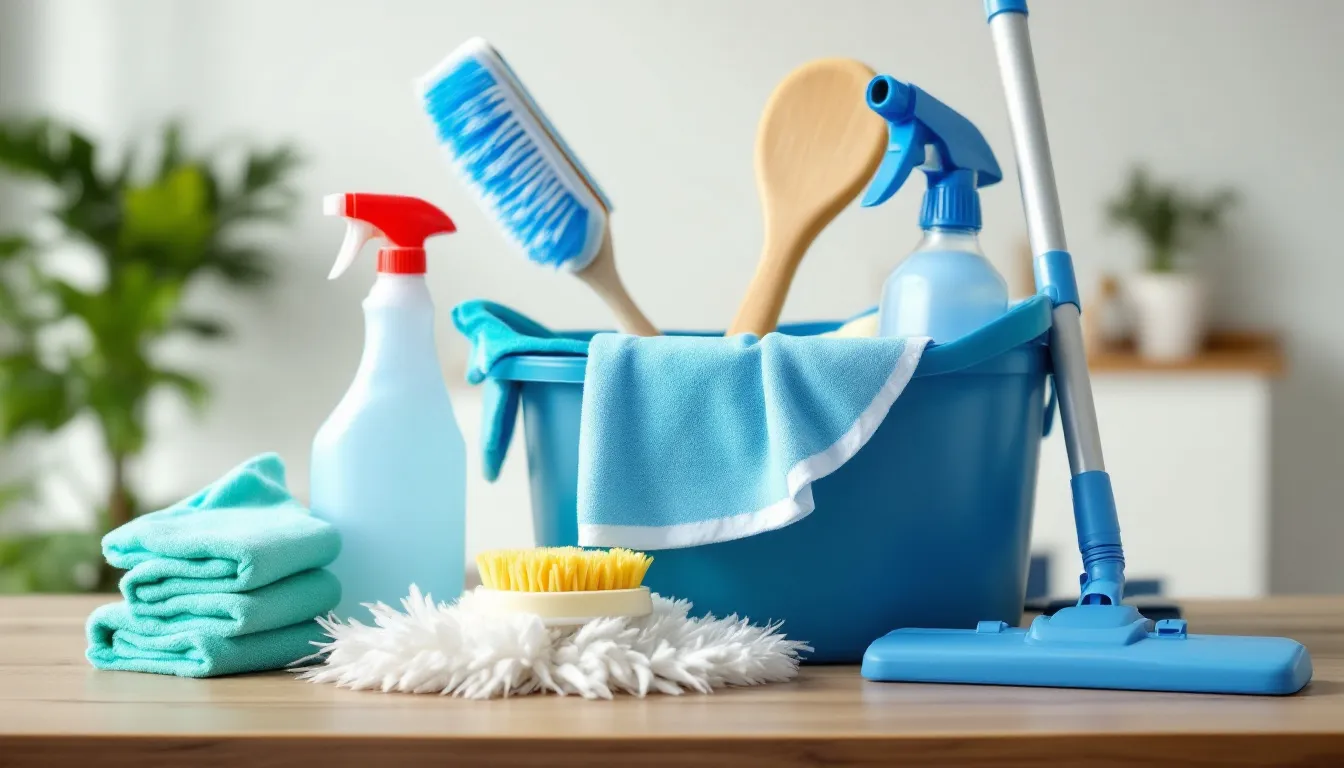
Once the assessment is complete, it’s time to gather your cleaning supplies. Safety is paramount when cleaning a hoarder’s house, so personal protective equipment is a must. These items ensure your safety throughout the cleaning process:
Heavy-duty gloves
N95 masks
Safety goggles
Disposable coveralls
Your cleaning supplies checklist should include:
All-purpose cleaners
Reusable rags
A step ladder
Hand tools
A flashlight
A shovel
These tools will help you tackle the various challenges that come with hoarding cleanup, from reaching high shelves to digging out buried items in a hoarder’s home. Establishing designated zones for keep, donate, deal, recycle, and trash will streamline the sorting process and make it more efficient.
Seal off the work area with plastic sheeting to contain dust and allergens, preventing the spread of contaminants to other parts of the home. With your supplies in hand and your work area prepped, you’re ready to start cleaning and transforming the space.
Start with One Room
When faced with a hoarder’s house, the sheer volume of clutter can be overwhelming. That’s why it’s crucial to start small with one room at a time. Focusing on a single area helps in several ways:
It breaks down the task into manageable chunks.
It provides small victories along the way.
It makes the process less daunting.
It builds momentum for the rest of the cleanup.
A good starting point can be the bathroom or the largest central room. These areas are often less emotionally charged, making it easier to begin the cleaning process. Starting in a space with fewer sentimental items allows you to ease into the task and build confidence from the beginning.
Setting a specific timeframe for decluttering each room can help maintain focus and prevent feelings of being overwhelmed. Prioritize removing large items first to create significant visual progress, making the entire organization process feel more manageable. With one room tackled, you’ll be well on your way to cleaning the entire hoarder’s home.
Sorting Process
The sorting process is a crucial step in any hoarding cleanup. A systematic approach can significantly reduce the time and effort required. One effective method is known as the four boxes system, which includes the following categories:
Keep
Donate
Recycle
This method helps streamline decision-making and ensures that every item is accounted for.
A clear rationale for your decisions supports timely decision-making and helps avoid procrastination, which can slow down the cleaning process. By deciding on a set of criteria for what to keep and what to get rid of, you can make more objective choices and stay focused on the task at hand.
Immediately discarding obvious trash can speed up the clearing process. The quicker you get rid of unnecessary items, the faster you can see progress. This not only boosts morale but also makes the remaining sorting tasks more manageable. With the right approach, the sorting process can be efficient and less stressful, helping to prevent garbage from piling up.
Dealing with Sentimental Items
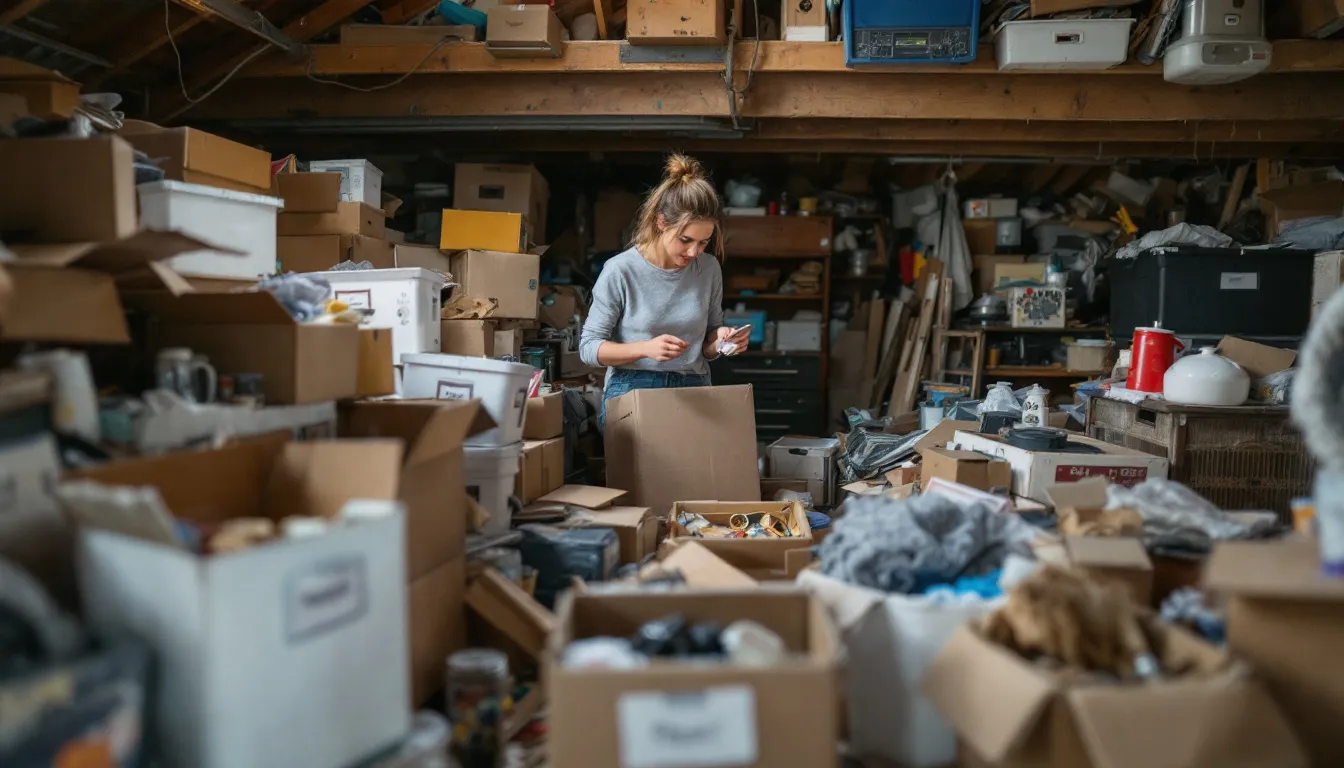
Sentimental items often hold a deep emotional attachment, making them some of the most challenging items to sort through. It’s best to handle these items last, after other household items and new items have been dealt with. This strategy ensures that the bulk of the cleanup is completed without getting bogged down by emotional decisions.
Encouraging family members and families to involve themselves in the sorting process provides emotional support and facilitates decision-making about which items a person considers worth keeping. This collaborative approach can make the process less overwhelming and more efficient.
Creating a digital record of sentimental items can also ease the process of letting go while preserving memories. Taking photos or videos of sentimental belongings can help capture their essence without retaining the physical possessions. This way, the memories live on, even if the items themselves are no longer part of the property.
Safe Waste Disposal
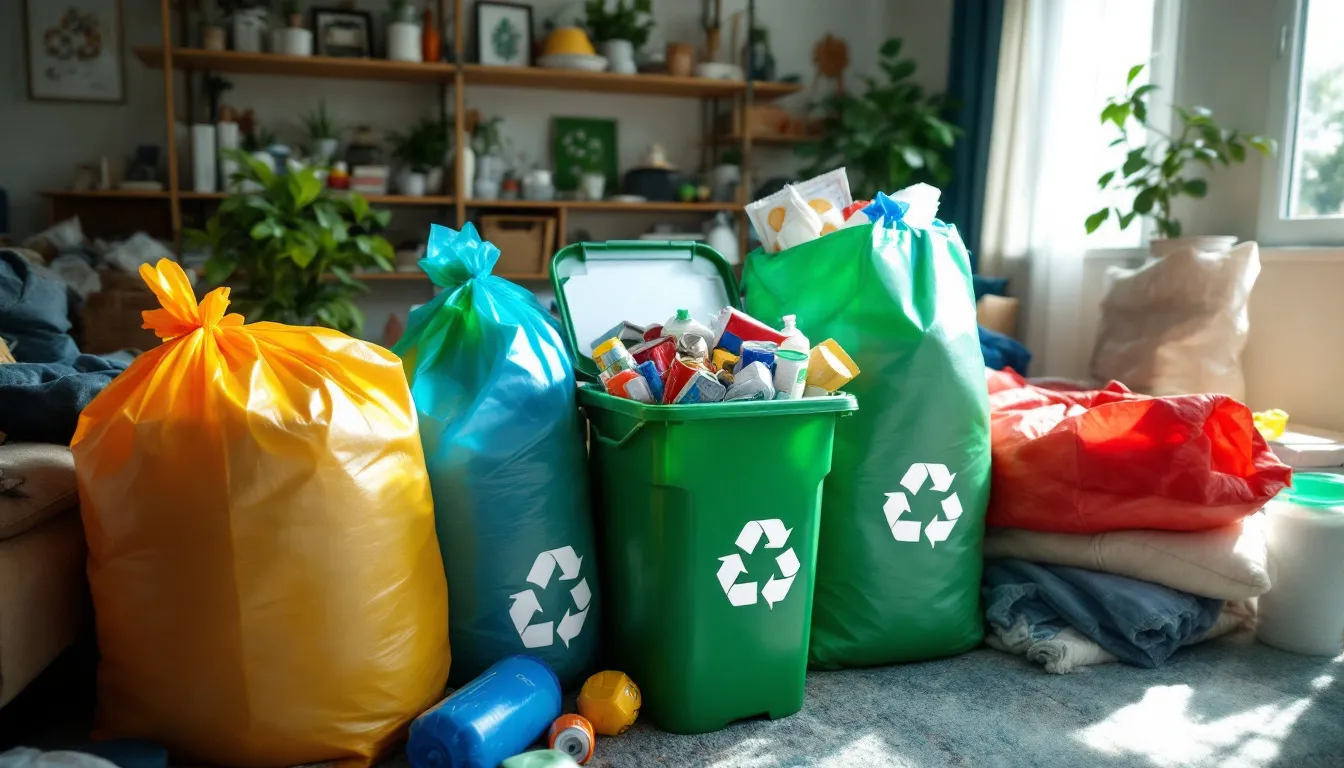
Safe waste disposal is a critical aspect of hoarding cleanup. Many local waste management services offer specific programs to help with the efficient removal of bulky items. Contacting these services or renting a dumpster can make the disposal process more straightforward and manageable.
Hazardous materials like paint, chemicals, and batteries require special handling and should not be throwing in regular trash. Proper disposal of these items is essential to avoid health hazards and environmental damage. Ensure that you follow local regulations and guidelines for disposing of hazardous hazard waste.
Scheduling pickups in advance with donation centers is advisable due to the large volume of usable items that may be collected. This helps ensure that donated items are handled properly and reach those in need. By planning ahead, you can make the waste disposal process smoother and more efficient.
Deep Cleaning and Sanitizing
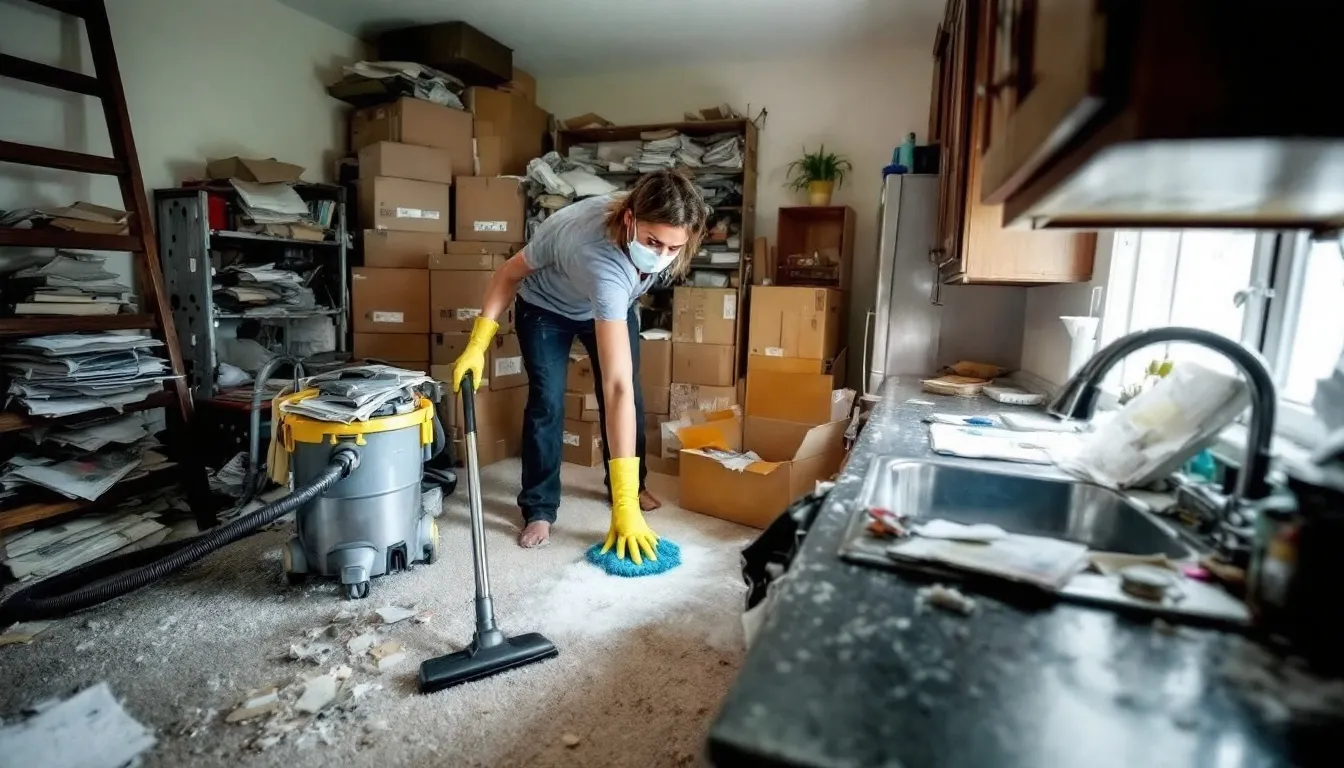
After the clutter has been cleared, deep cleaning and sanitizing the space is crucial. Using a HEPA vacuum can effectively filter the air and capture fine dust and allergens, ensuring a healthier environment. This step is essential to restoring the living space to a good condition.
Specialized disinfectants are necessary for thorough deep cleaning. Tasks should include dusting, vacuuming, and scrubbing surfaces to remove dirt and allergens. This comprehensive approach ensures that all areas are cleaned and sanitized, making the space safe for habitation.
Using EPA-approved antimicrobial products effectively disinfects surfaces and helps prevent future mold growth and pest infestations. By focusing on deep cleaning and sanitizing, you ensure that the hoarder’s house is not just decluttered but also hygienic and safe.
Organizing the Space
Once the space is clean, organizing it effectively is the next step. Utilizing clear, labeled bins and installing shelving can maximize available spaces. These storage solutions help keep items organized and easily accessible, reducing the chances of future clutter.
Highlighting and properly displaying kept clothing items maintains their significance and connection. Implementing cleaning routines ensures long-term cleanliness. Regular upkeep ensures that the space remains functional and clutter-free.
Viewing home organization as a holistic project rather than tackling individual rooms in isolation can be more effective. This approach ensures that the entire home is organized in a cohesive manner, making it easier to maintain. By organizing the space thoughtfully, you create a functional and inviting living environment.
Emotional and Psychological Support
The emotional and psychological aspects of hoarding cleanup cannot be overlooked. Hoarders often experience strong emotional attachment to their belongings, making decision-making challenging. Providing support during this time is crucial to help them through the process.
Involving a mental health professional provides ongoing support and helps address underlying issues related to hoarding disorder. Respecting the hoarder’s autonomy and involving them in decision-making honors their attachment and feelings.
Approaching the cleanup with compassion and understanding is vital. Emotional reactions such as distress and frustration are normal and indicate progress rather than failure. By offering empathetic support, you help create a helpful and lasting change in their friend life, alleviating anxiety with outside help and addressing the perceived need for support.
When to Seek Professional Help
In some cases, seeking professional help is necessary. Professional cleaners are trained to handle biohazardous materials and extensive contamination, ensuring a safe and thorough cleanup. Their expertise can make a significant difference in the outcome of the cleaning process.
DIY cleanups can lead to higher costs due to improper handling of hazardous materials. Professional support not only addresses the physical clutter but also provides emotional understanding throughout the process. This comprehensive approach ensures that all aspects of hoarding cleanup are effectively managed.
Prompt action is crucial to prevent dangerous living conditions and health hazards, as failing to do so can lead to serious consequences. If you notice signs that the situation is beyond your control, it’s time to call in the professionals. Their expertise and resources can transform a hoarded space into a safe and livable home.
Summary
Cleaning a hoarder’s house is a complex and emotional process, but with the right approach, it can be done effectively. From assessing the hoarder’s home and gathering essential cleaning supplies to deep cleaning and organizing the space, each step is crucial for a successful cleanup. Providing emotional and psychological support is equally important to ensure lasting change.
Remember, it’s okay to seek professional help when needed. Their expertise can make a significant difference in handling biohazards and extensive contamination. By following these steps, you can transform a cluttered house into a clean, functional, and inviting home. Let’s embark on this journey together and make a positive impact.
Frequently Asked Questions
What is the first step in cleaning a hoarder's house?
The first step in cleaning a hoarder's house is to assess the space to identify specific risks and intervention strategies. This critical evaluation sets the foundation for an effective cleanup process.
What cleaning supplies are necessary for hoarder house cleaning?
For hoarder house cleaning, it's essential to have personal protective equipment, all-purpose cleaners, reusable rags, a step ladder, hand tools, a flashlight, and a shovel. These supplies will help ensure a safe and effective cleaning process.
How should I handle sentimental items during the cleanup?
Handle sentimental items last, involve family members in the decision-making process, and consider creating a digital record to preserve their memories effectively. This approach ensures that you honor their significance while making thoughtful decisions.
When should I seek professional help for hoarding cleanup?
You should seek professional help for hoarding cleanup when there are biohazards, extensive contamination, structural damage, or when the situation feels overwhelming. Addressing these issues promptly can prevent further complications.
What is the importance of emotional and psychological support during hoarding cleanup?
Emotional and psychological support is essential during hoarding cleanup as it helps individuals manage their attachment to belongings, facilitating lasting change. This support not only aids in the decluttering process but also addresses the underlying psychological issues tied to hoarding.
Latest news
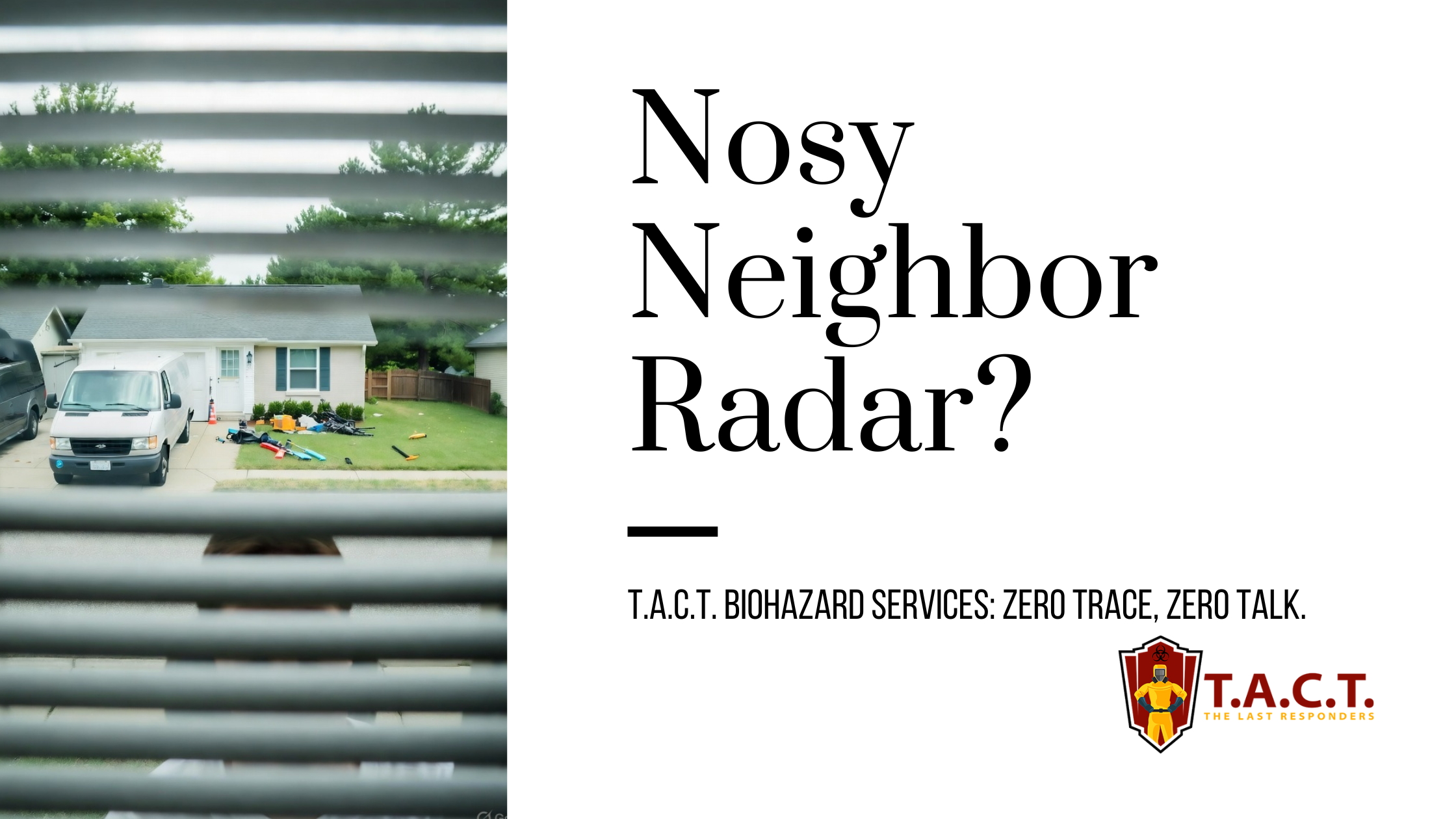
Nosy neighbors peeking? T.A.C.T. North Atlanta offers discreet biohazard remediation for rodent infestations, mold, hoarding, and more. Unmarked vehicles, quiet experts, full privacy—24/7 service at 470-781-4775.
Read More